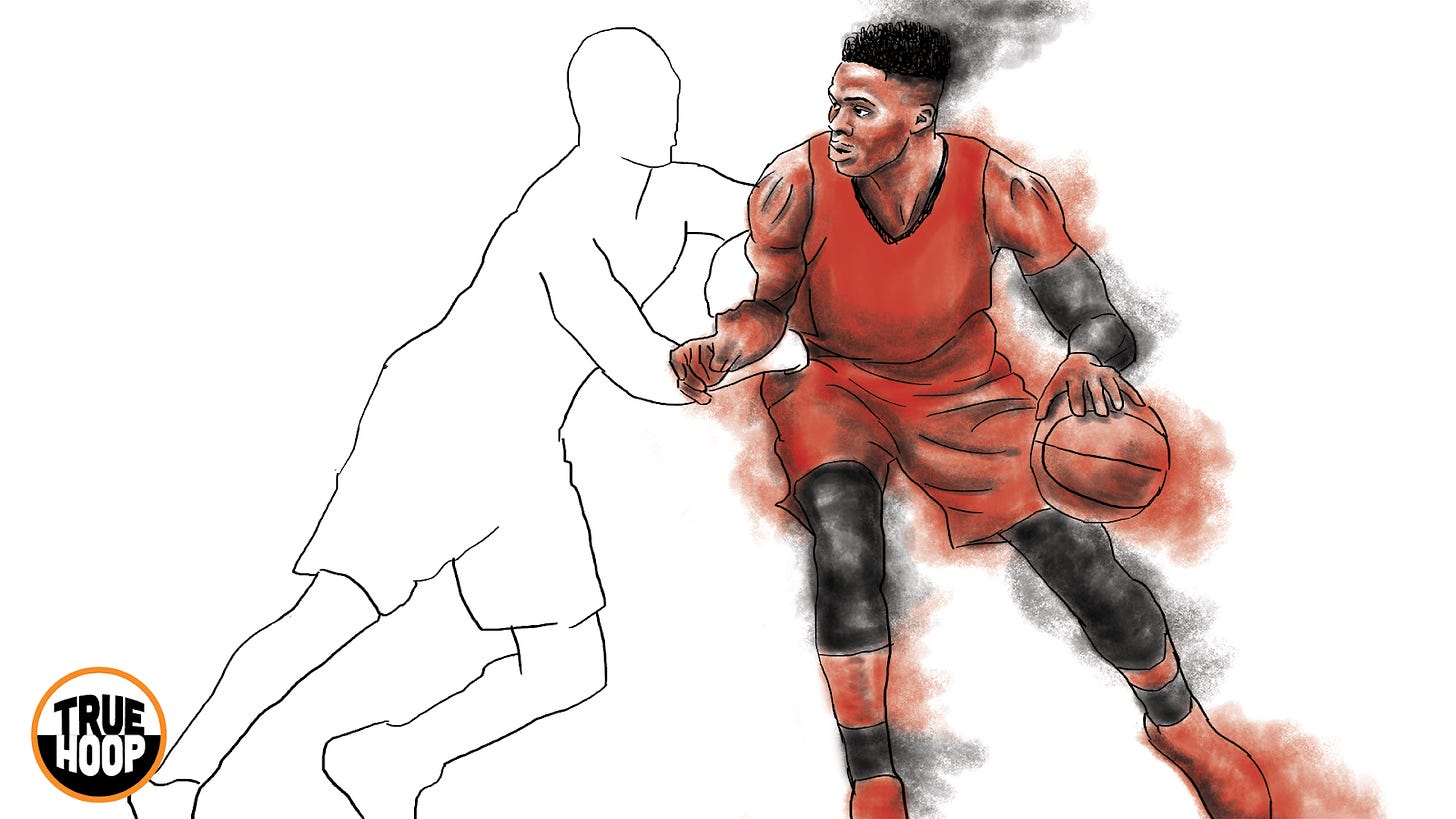Put Westbrook in the post
How to build the NBA’s best offense around a poor shooter
You’re reading a post TrueHoop subscribers first received in 2019. To get this kind of content in real time:
BY DAVID THORPE
If the Rockets melt down into nothingness, go ahead and blame LeBron James. While you’re at it, Kawhi Leonard, Anthony Davis, and Paul George deserve some blame too. With the Warriors set for a down(ish) season, the Rockets–with James Harden and Chris Paul soundly entrenched as their stars–were positioned to be the new Western Conference team to beat. That is, until Davis’s demand to be traded to the Lakers became a fait accompli.
Even after that trade, and after the first mad flurry of free agent transactions, Houston was still looking like it could contend for that West title. But then Kawhi and George made their power pact with the L.A. Clippers. Houston? It had a problem. Not only had Paul's talents started to trend downwards in the last couple of years, but he had signed one of the least team-friendly contracts in the NBA. Prior to the Kawhi thunderblast, it …



